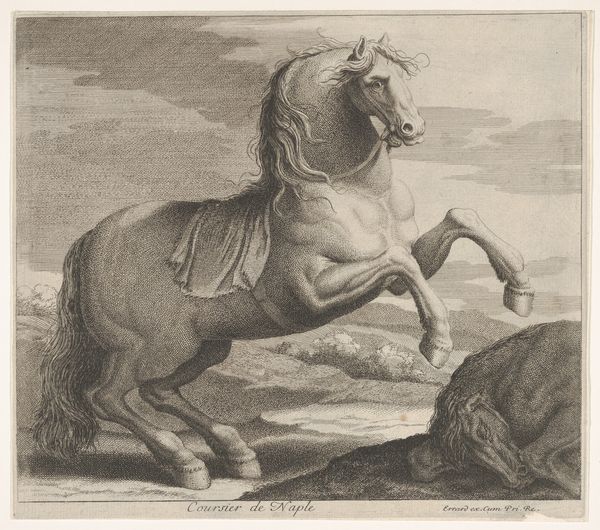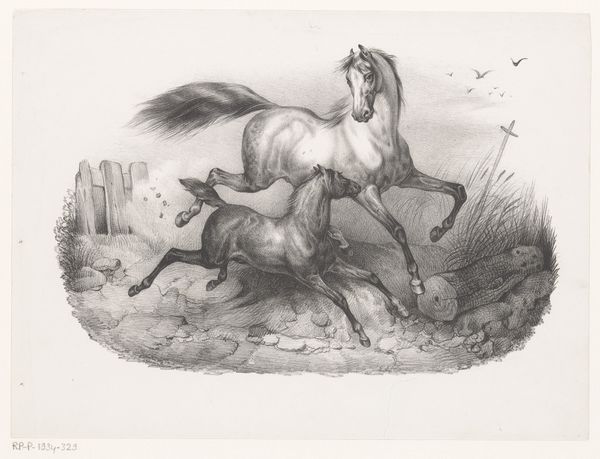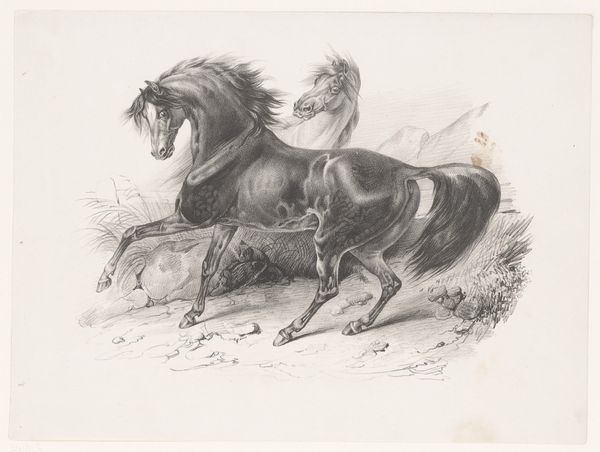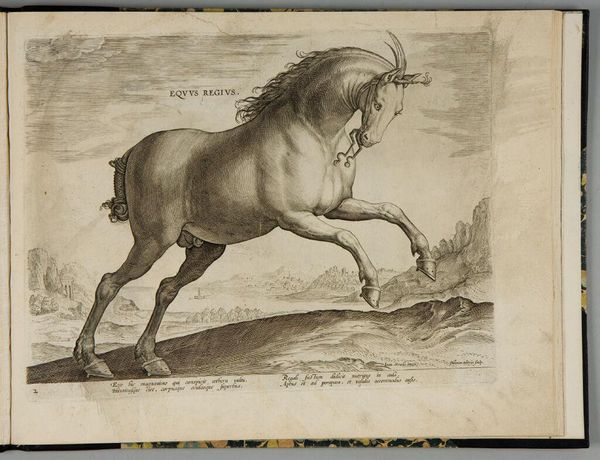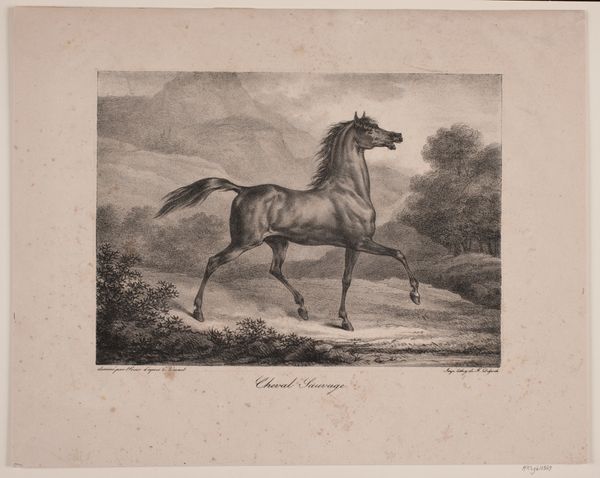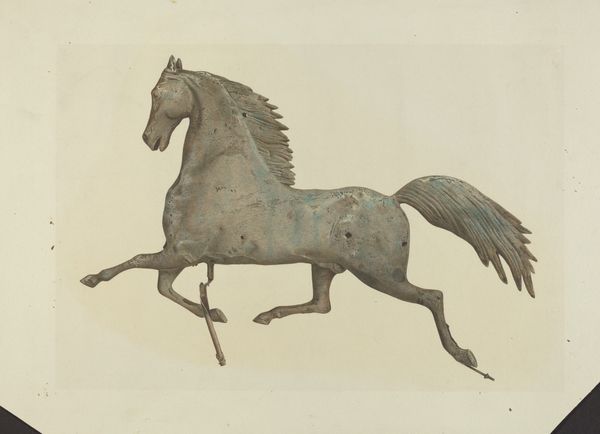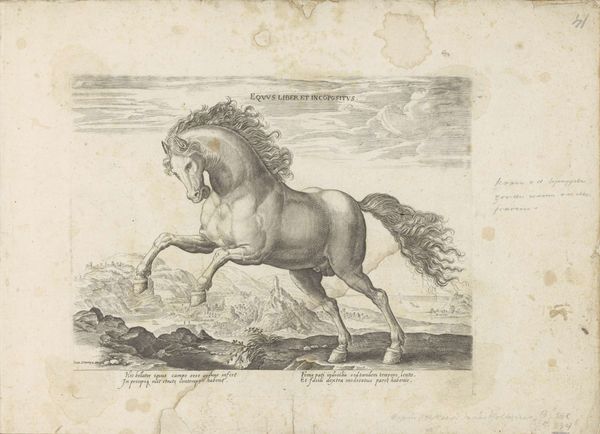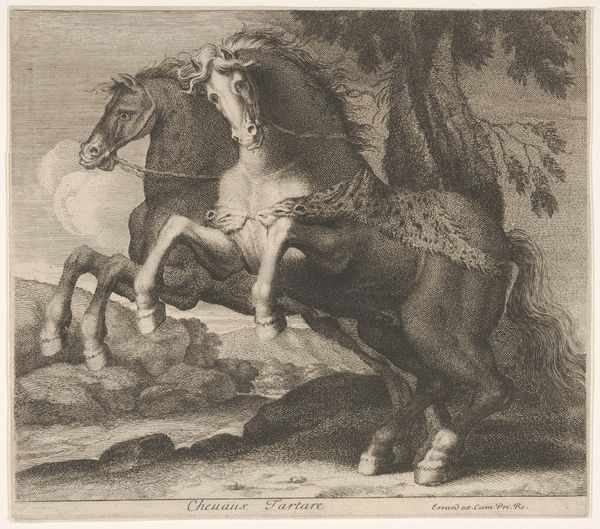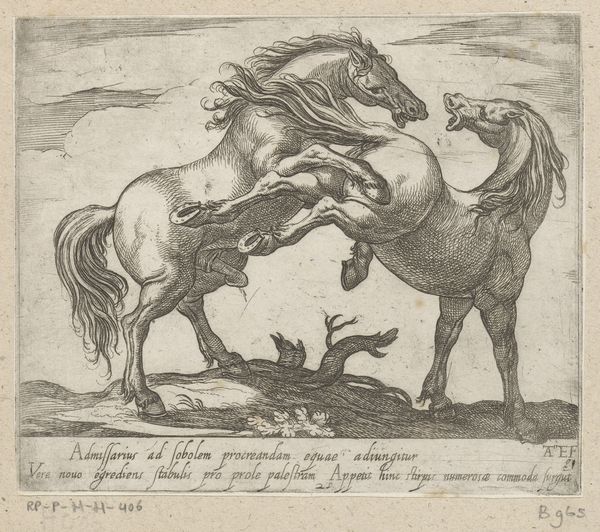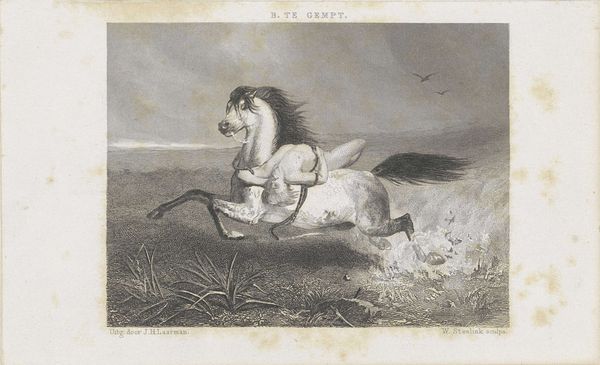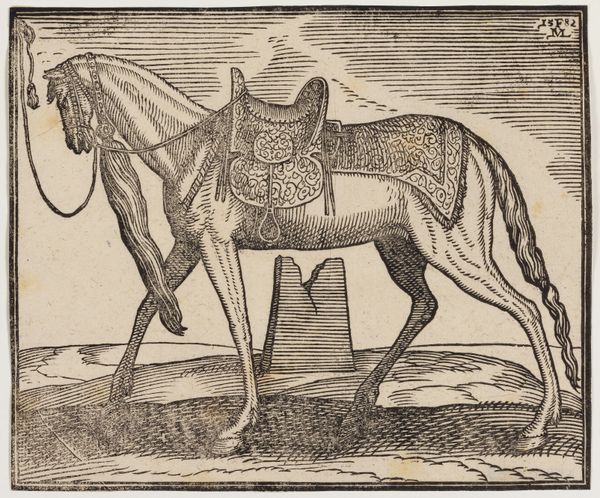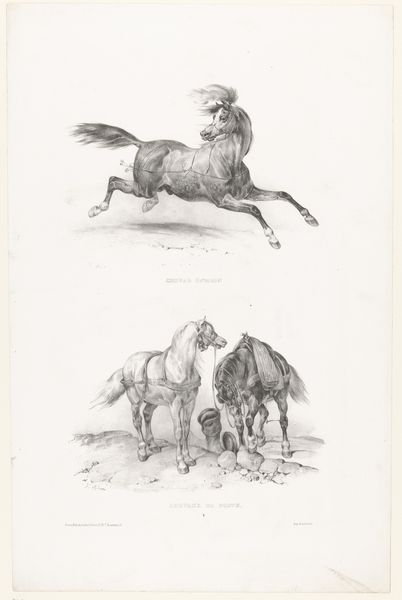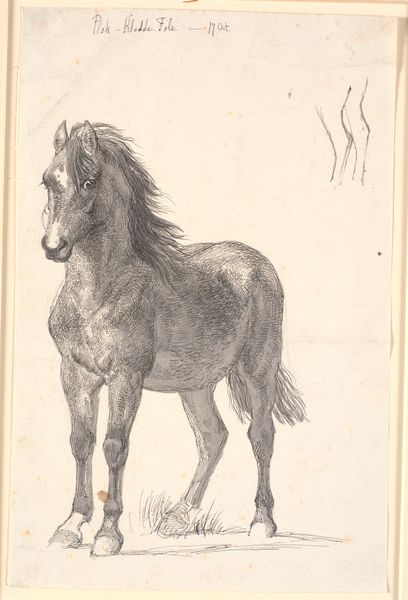
drawing, lithograph, print, paper
#
drawing
#
animal
#
lithograph
# print
#
landscape
#
figuration
#
paper
#
romanticism
#
history-painting
Dimensions: 306 × 349 mm
Copyright: Public Domain
Editor: This lithograph from around 1820, titled "Wild Horses Fighting" by Carle Vernet, depicts a dramatic scene. I’m immediately struck by the dynamism captured in what feels like a very brief moment. The textures in the horses' bodies, the grass, it feels quite real! How do you approach this work from your perspective? Curator: Indeed, the dynamic tension is key here. Notice how Vernet uses line to define form and motion. The diagonal lines, particularly in the horses’ legs and manes, create a sense of unrestrained energy. The limited tonal range, typical of lithography, throws all the emphasis onto line and shape. Are the curves repeated to enhance motion, would you say? Editor: That's a good question; yes I would say that they are. The sweeping curve of the rearing horse’s neck is echoed in the tail of the horse behind it. And even those little tufts of grass seem to echo the flowing manes. It contributes to the energy of the composition. Curator: Precisely! The composition avoids any central stasis. Your eye is compelled to move around the image, tracing those lines of force. Vernet’s expertise lay in capturing equine anatomy. Editor: That's interesting - and it highlights the level of detail he includes in musculature and the poses. It does feel true-to-life. So, without necessarily knowing the context or what it’s “about,” the real value is in how it’s made and how those aesthetic components work together? Curator: The emphasis here is not necessarily on historical or symbolic narrative. The value lies precisely in the formal relationships, in the orchestration of line and form to evoke the feeling of raw, untamed energy. Editor: I see. Looking at it that way has opened my eyes to a completely different aspect of this artwork, beyond the subject matter alone. Curator: And, in turn, helps us appreciate how formal choices generate specific emotive responses.
Comments
No comments
Be the first to comment and join the conversation on the ultimate creative platform.
